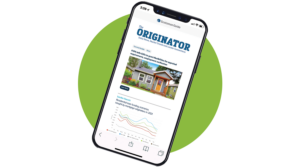What is a no-income-verification mortgage?
The term “no-income mortgage” is often misused in real estate finance. All lenders will look to verify that a borrower is able to repay a loan, so the borrower must show proof of earnings or liquid assets. This is traditionally achieved using standard income documentation such as pay stubs or W-2 forms. But some borrowers (such as self-employed workers or those who have commission-based wages) aren’t able to provide this documentation. In these cases, a lender may accept other proof of the borrower’s net worth. Alternate forms of documentation that are used for no-income-verification loans include bank statements, pensions, investment accounts or equity in other properties.
No-income-verification mortgages can include products with similar names, such as no-documentation loans or stated-income loans. What each of these products have in common is that a lender will allow a borrower to qualify without traditional income-verification methods.
What are the types of no-income-verification mortgages?
Stated Income, Verified Assets (SIVA): These offerings are commonly known as bank-statement loans. They can be designed for many types of borrowers — including high net worth individuals or self-employed workers — who wish to purchase or refinance a primary residence or second home. SIVA loans are often categorized as jumbo loans, meaning they are too large to conform with the standards of the government-sponsored enterprises. A lender may require a self-employed applicant, for example, to show proof of consistent income over a period of at least two years by furnishing bank statements.
No Income, Verified Assets (NIVA): These are similar to SIVA loans, but income and employment are not considered in the loan approval decision. The lender will look exclusively at the borrower’s assets and use them as collateral. Retirees with verifiable cash reserves are often good candidates for these loans.
Stated Income, Stated Assets (SISA): In the wake of the housing crisis of the late 2000s, federal legislation was passed that barred lenders from offering SISA mortgages (or true no-documentation loans) for owner-occupied properties. Real estate investors, however, can still obtain these loans. Bank statements may be required for verification of net worth.
No Income, No Assets (NINA): Lenders that offer these investment-property mortgage programs are few and far between. NINA loans fall into the category of asset-based lending in which the lender is concerned solely with the value of the property and its ability to produce income. Larger downpayments and higher credit scores are often associated with the loans.
Who offers no-income-verification loans?
Scotsman Guide’s Lender Search connect mortgage originators to a variety of lenders that offer financing free from conventional borrower requirements. Use the search engine to find the right partner for your unique loan scenario — from gig-economy workers seeking a first home purchase to retirees in need of a jumbo loan.


